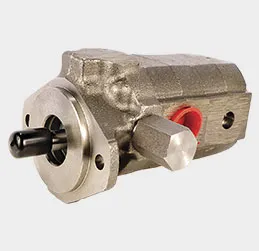engine block sand casting
The Importance of Engine Block Sand Casting in Automotive Manufacturing
The automotive industry has continually evolved, incorporating advanced technologies to enhance vehicle performance and efficiency. Among the multitude of components crucial to vehicle functionality, the engine block stands out as a foundational element in automotive design. The process of manufacturing engine blocks plays a significant role in the overall performance of vehicles, and one of the most widely used methods for producing engine blocks is sand casting.
Understanding Sand Casting
Sand casting is a versatile and cost-effective manufacturing process that involves creating a mold from a mixture of sand, clay, and water. The process begins with creating a pattern of the engine block, which is then surrounded by the sand mixture in a mold box. Once the mold is prepared, molten metal—typically aluminum or iron—is poured into it, filling the cavity formed by the pattern. After the metal cools and solidifies, the sand mold is removed, revealing the engine block.
This method is favored for several reasons. Primarily, sand casting allows for the creation of complex shapes that can be difficult to achieve with other manufacturing processes. Additionally, it is relatively inexpensive, especially in comparison to more advanced techniques like die casting. The ability to create large castings is another significant advantage, as engine blocks can be substantial in size and weight.
Benefits of Sand Casting Engine Blocks
The impact of sand casting on the production of engine blocks is multifaceted. One of the primary benefits is the customization it offers. Engine blocks can be designed to match specific engine configurations, optimizing power and efficiency for various vehicle models. This flexibility is critical as automotive manufacturers strive to meet diverse market demands.
Moreover, the sand casting process allows for the use of different alloys, enabling engineers to select materials that enhance performance characteristics such as durability, weight, and heat resistance. Aluminum engine blocks produced through sand casting are not only lighter, thereby improving fuel efficiency, but they also offer excellent thermal conductivity, which is crucial for managing engine temperatures.
engine block sand casting

Another significant advantage is the recycling potential inherent in sand casting. Most foundries recycle the sand used in the casting process, reducing waste and minimizing environmental impact. This focus on sustainability aligns with the automotive industry's broader goals of reducing carbon footprints and promoting environmentally friendly practices.
Challenges and Innovations
While sand casting remains a dominant technique, it is not without its challenges. The quality of the final product can be affected by factors such as the control of sand grain size and the uniformity of the mold. Inaccuracies in the mold can lead to defects in the engine block, potentially compromising its structural integrity and performance.
To mitigate these risks, advancements in technology have begun to transform traditional sand casting methods. Techniques such as computer-aided design (CAD) and simulation software allow engineers to optimize mold designs and predict potential issues before they occur. Additionally, the advent of 3D printing has introduced possibilities for creating more precise patterns, further enhancing the quality of the castings.
Furthermore, ongoing research into new alloy compositions and sand materials aims to improve the performance and sustainability of sand casting. Manufacturers are increasingly exploring eco-friendly alternatives to traditional sand, reducing the environmental footprint of the casting process while maintaining the quality and performance of the engine blocks.
Conclusion
In conclusion, sand casting plays an indispensable role in the production of engine blocks in the automotive industry. Its ability to create complex shapes, coupled with cost-effectiveness and material flexibility, makes it a preferred choice for manufacturers. As the automotive sector continues to evolve, innovations in sand casting techniques and materials will likely enhance the efficiency and sustainability of engine block production. By embracing these advancements, the industry can ensure that vehicle performance meets the increasing demands of consumers while also adhering to environmental standards. Ultimately, the synergy of traditional methods and modern technology paves the way for a more efficient and sustainable automotive industry.
-
Custom Steel Sand Casting Services Precision & Durability GuaranteedNewsApr.29,2025
-
Arise Precision Casting Custom Metal Casting Solutions & ServicesNewsApr.29,2025
-
Sand Casting Guide Definition, Process & High-Quality Sand SuppliesNewsApr.28,2025
-
Premium Alloy Die Casting Manufacturer Aluminium & Zinc SolutionsNewsApr.28,2025
-
Precision Aluminum Die Casting Custom Solutions & Fast TurnaroundNewsApr.27,2025
-
Precision Complex Sand Casting Solutions Durable & Custom DesignsNewsApr.27,2025















